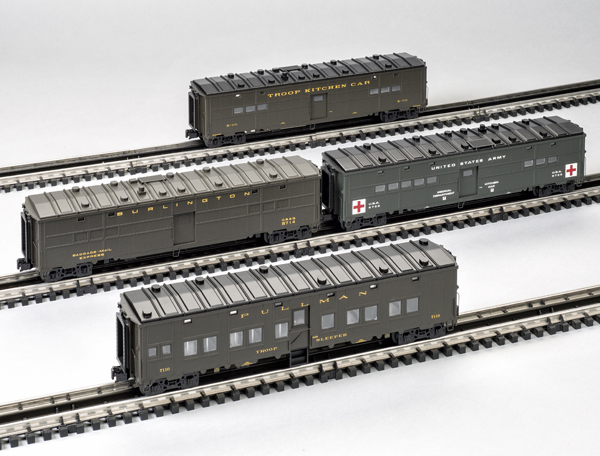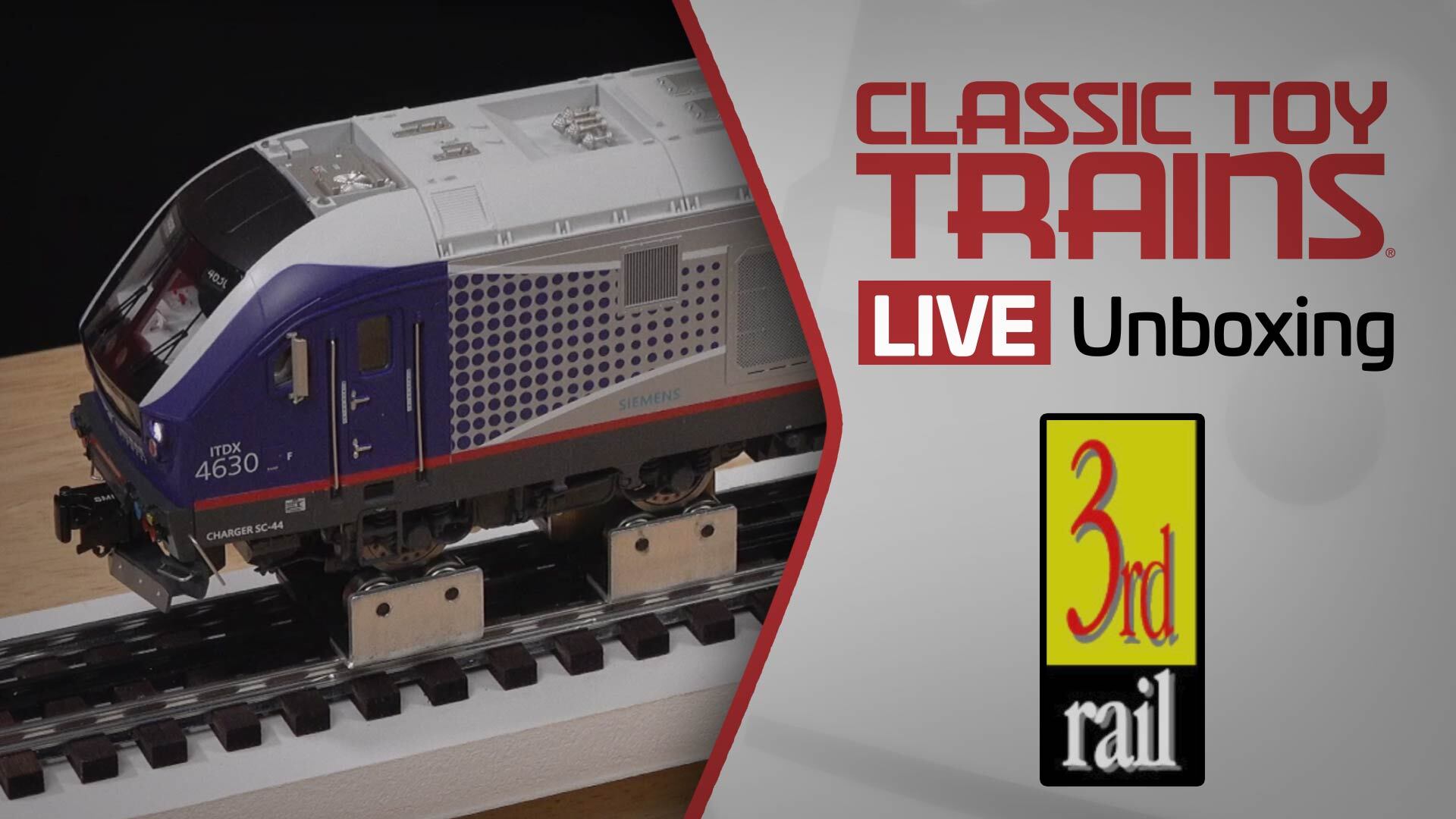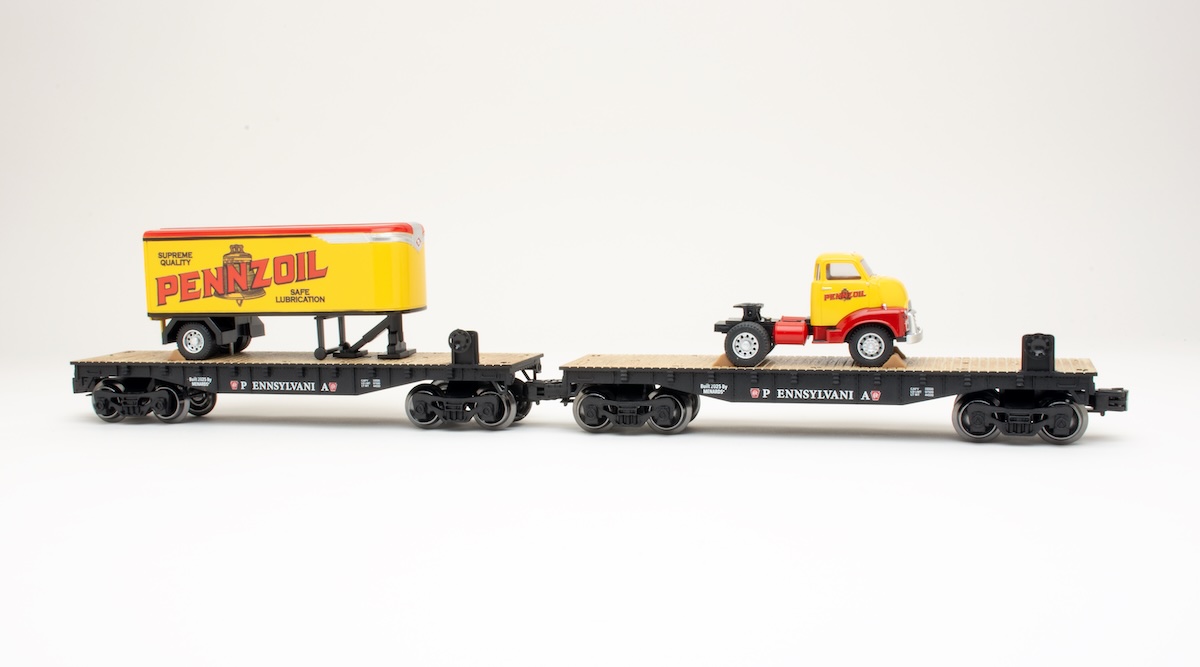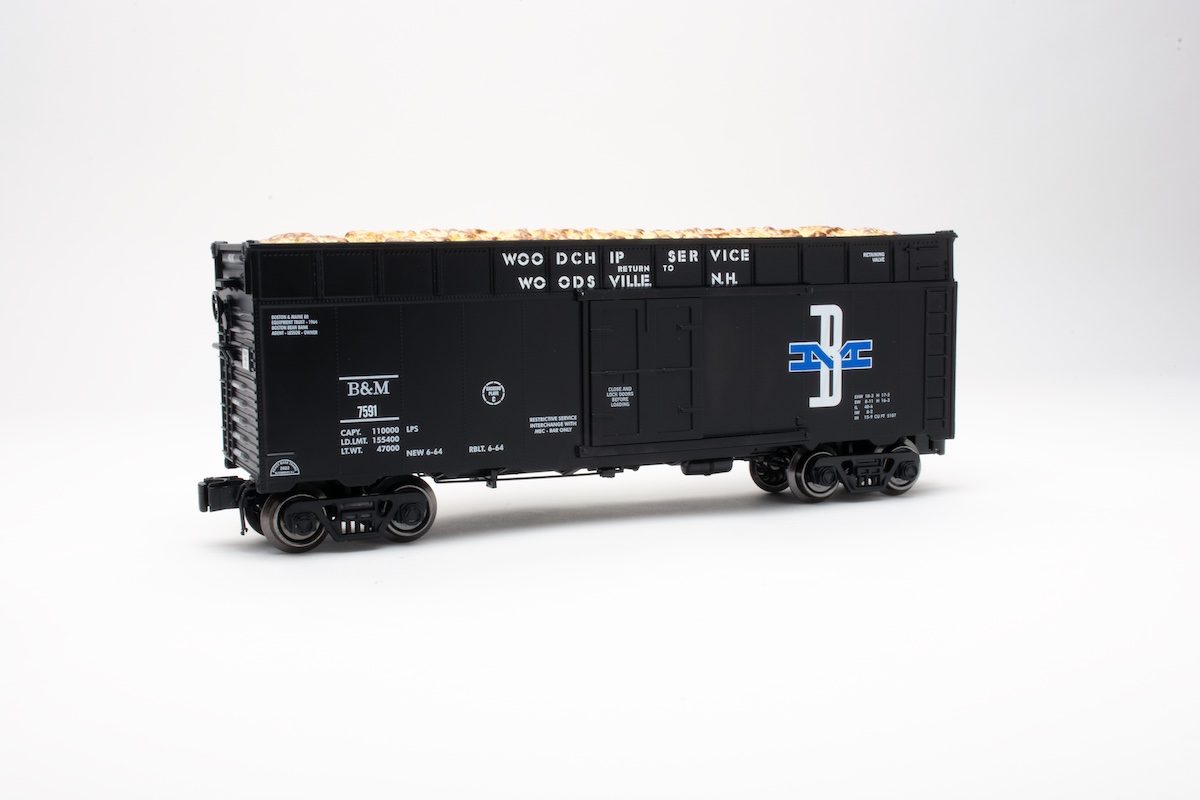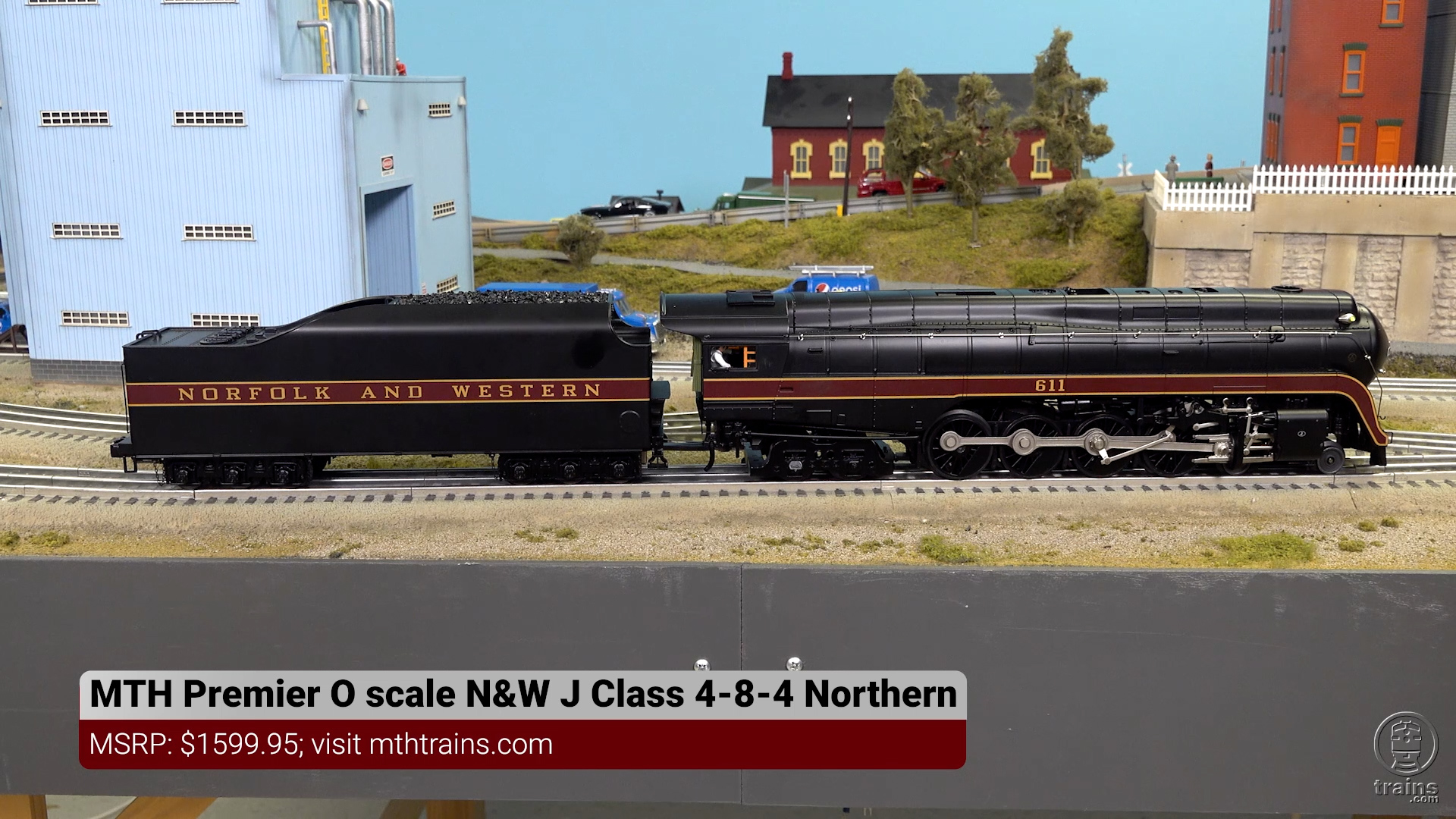Price: $99.95 (Sleeper/kitchen car/hospital car) $74.95 (Express boxcar) Min Curve: O-45 Features: Die-cast metal trucks and couplers, interior illumination, sleeper interior decoration Current-production road names: Pullman, Hospital Kitchen Car, Troop Kitchen Car; Express car road names: Burlington Route, Chesapeake & Ohio, New Haven, and New York Central
War often tends to be a come-as-you-are affair. The U.S. had a bit of warm-up time before it became entangled in the global conflict, but the focus of most logistical efforts was building airplanes, ships, and tanks and forming a larger military. The reality of moving millions of soldiers and sailors around the country, when coupled with the mass movement of civilian war workers to newly created production centers, was enough to choke the country’s rail capacity.
Each month during World War II, as many as 2,500 special trains were needed to move personnel and equipment. In just 1943, more than 10 million troops were moved back and forth around the country. Demand was up, and the total civilian fleet wasn’t going to be sufficient.
The Pullman Co. tried to fill the gap with hundreds of surplus, non-air-conditioned sleepers. Excess express and baggage cars were outfitted as temporary cook cars. The Pennsylvania RR converted X32-class automobile boxcars into makeshift troop sleepers and a smaller number into kitchen cars. More capacity was essential, so before the war was over the military placed orders for 2,400 troop sleepers and 800 troop kitchen cars to fill the need.
The sleepers
The design of the sleepers was based on a boxcar, but with attention toward what type of cargo it would haul. The cars had cushioned trucks, and the braking system was modified for a wide range of actions.
Soldiers entered the cars through two doors located in the center of each side. There were no vestibules, but the cars had doors and rubber diaphragms on each end.
There were 10 windows on each side, a window at the side door and smaller windows at the washbasins and toilet. There were exhaust vents and intakes as well as a vapor heating system. Bunks, which were in three levels, were situated crosswise out from the sides of the car and not along them. Each car’s sleeping capacity was 29 passengers and an attendant. During the day, the upper berth was fixed, and the middle berths were lowered to form seating.
Pullman operated the troop cars. The porters were Pullman employees, and their responsibilities including setting up the berths and bedding material.
Kitchen cars
The kitchen cars had a similar genesis: Boxcar shape, cushioned trucks, and steam and signal lines enabling operation on any passenger train. Entrance was via a single side door (it was wider than the doors on sleepers for easier loading of provisions). The car had an air-pressure water system that had separate lines for sinks and a crew shower.
The focal point of the operation was a pair of U.S. Army coal-fired ranges. They had an extensive overhead exhaust system. There were also a freezer, a bread locker, and ample table space for food preparation. The military units being transported provided provisions, cooking utensils, and personnel to handle the kitchen car and serve meals. The cars, which normally were placed in the middle of trains, could serve meals for as many as 250 people.
Passengers remained at their seats and were served via trolley. Plates and cups were disposable paper.
Hospital kitchen cars were slightly different, having 32-volt axle generators and storage batteries for lighting.
At the end of the war the Army offered more than 2,200 sleepers to railroads at fire-sale prices. Many of them continued to work in the civilian world as express or baggage cars or as components of maintenance-of-way consists.
O gauge models
Weaver introduced these cars to the O gauge world, and Atlas O acquired the tooling after that firm closed. I bought two of the original cars in postwar road names and was pleased with them. They went back in their boxes and stayed there until the Atlas O versions arrived.
The handsome cars feature distinctively different bodies instead of having the same type with a few alterations.
The sleeper matches the window configuration of the prototype. The side door has a safety brace locked in place, and three steps extend down to track level. The cars have inset ventilators on the side, just below the roof. Eight exhaust ventilators are topside.
The car ends have short diaphragms, and the corners have two grab irons and a stirrup step for crew. The rivet detail throughout the body is clean and crisp.
The interior of the car is terrific. The bunks are set up for the troops to hit the rack. I can imagine it must have gotten pretty crowded when porters had to move the G.I.s out of their seats, turn the seats into beds, and then make the bunks. I’m sure some handy Andy will customize a few soldiers (or sailors) to flesh out the interiors.
The car has undercarriage detail (supports, brake lines, and conduit) and die-cast metal trucks and couplers. The Allied High-Speed Full Cushion trucks look great – in fact, the troop cars are the only O gauge rolling stock I recall seeing with them. Possibly because they were prone to derail, after the war they were banned from interchange between railroads. The kitchen car shares the same level of rivet and seam detail as the sleeper. It has the same diaphragms and corner safety devices. However, the cook car has nine windows (counting the door), and they are smaller and differ in shape and level from those on the sleeper. There are no lavatory windows (no lavatory!). The kitchen car has a detailed interior, but per the windows, it is tough to see. Up top you’ll find 13 exhaust stacks and a screened exhaust that must be from the double oven.
Our Burlington Route express version of the kitchen car is similar to the Army version in every way, except the flush-fitted window inserts are black. This represents sealed windows for greater security.
The painting and decoration on all the cars were skillful and free of errors. All the printing, from the large “PULLMAN” up top to the small “Water fill at each end of car” at the bottom of the cars, was clear and crisp.
Fall in!
Three cheers for Atlas O for saving the tooling for Weaver’s troop cars from a fate worse than death. The high manufacturing standards of Atlas are present in the execution of these cars, and they are as unique a series as you’ll find in the O gauge world. If you bought the old Weaver cars and have problems with the metal trucks disintegrating or the car floors warping, Atlas is cataloging replacement parts for you to buy and install.
Atlas O’s troop series does history a service by producing a car style in O gauge that few have seen outside a museum or a history book.





